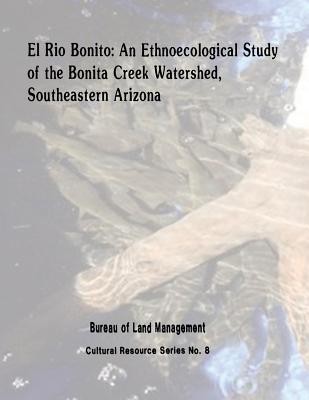
- We will send in 10–14 business days.
- Author: Bureau of Land Management
- Publisher: CreateSpace Independent Publishing Platform
- Year: 2014
- Pages: 318
- ISBN-10: 1496045289
- ISBN-13: 9781496045287
- Format: 21.6 x 28 x 1.7 cm, softcover
- Language: English
- SAVE -10% with code: EXTRA
Reviews
Description
"Ecosystem management" is a term used frequently in land managing agencies today. It signals a shift in focus from managing resources separately on the landscape, to managing resources holistically as interconnected parts of environmental systems. The notion that components of an environment function together and affect one another is not new, but the manner in which it is being emphasized by the Bureau of Land Management (BLM) is changing the way our resource management professionals approach their work and interact with each other. The BLM's cultural resource program is uniquely equipped to provide the kind of information, and the long-term perspective, that can help land managers understand how the ecosystems they manage have changed through time, how human land uses have modified them over the past hundreds or thousands of years, and how present-day land use proposals are likely to affect the health of those ecosystems. We can and should learn from the successes and mistakes of the past to help us more effectively manage our resources in the present and plan responsibly for the future. The document you are reading is a contribution to responsible ecosystem management. This is the second ethnoecology study funded by the BLM. The first such study was published as No. 7 in the Arizona BLM cultural resource series. Both studies were conceived of and overseen by an inter-disciplinary team in our Safford District. The funding for both studies was contributed by several resource programs in keeping with their cross-program benefits. With the publication of El Rio Bonito, Safford District has once again led the way in applying cultural resource information to the management of other resources.
EXTRA 10 % discount with code: EXTRA
The promotion ends in 19d.18:42:48
The discount code is valid when purchasing from 10 €. Discounts do not stack.
- Author: Bureau of Land Management
- Publisher: CreateSpace Independent Publishing Platform
- Year: 2014
- Pages: 318
- ISBN-10: 1496045289
- ISBN-13: 9781496045287
- Format: 21.6 x 28 x 1.7 cm, softcover
- Language: English English
"Ecosystem management" is a term used frequently in land managing agencies today. It signals a shift in focus from managing resources separately on the landscape, to managing resources holistically as interconnected parts of environmental systems. The notion that components of an environment function together and affect one another is not new, but the manner in which it is being emphasized by the Bureau of Land Management (BLM) is changing the way our resource management professionals approach their work and interact with each other. The BLM's cultural resource program is uniquely equipped to provide the kind of information, and the long-term perspective, that can help land managers understand how the ecosystems they manage have changed through time, how human land uses have modified them over the past hundreds or thousands of years, and how present-day land use proposals are likely to affect the health of those ecosystems. We can and should learn from the successes and mistakes of the past to help us more effectively manage our resources in the present and plan responsibly for the future. The document you are reading is a contribution to responsible ecosystem management. This is the second ethnoecology study funded by the BLM. The first such study was published as No. 7 in the Arizona BLM cultural resource series. Both studies were conceived of and overseen by an inter-disciplinary team in our Safford District. The funding for both studies was contributed by several resource programs in keeping with their cross-program benefits. With the publication of El Rio Bonito, Safford District has once again led the way in applying cultural resource information to the management of other resources.


Reviews